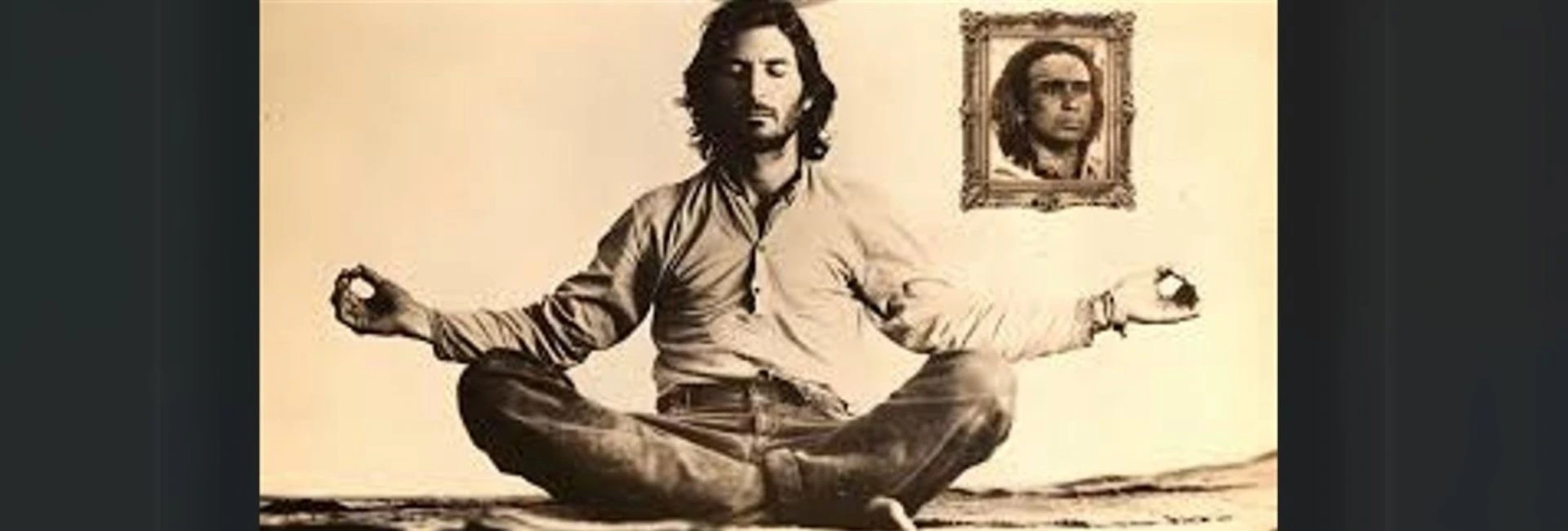(January 20, 2025) When a rare handwritten letter from Steve Jobs surfaced at an auction a couple of years ago, it fetched an astonishing $500,312 (about ₹4.32 crore), and reignited public fascination with the spiritual odyssey of the late Apple co-founder. Dated February 23, 1974, a day before his 19th birthday, the letter was addressed to a high school friend, Tim Brown. In it, Jobs expressed his deep yearning to attend the Kumbh Mela, a major Hindu pilgrimage, as part of his quest for meaning and personal growth. “I wish to go to India for the Kumba Mela, which starts in April,” Jobs wrote.
Before his visit to India, Steve Jobs already appeared deeply influenced by Hinduism, signing off his letter with the words, ‘Shanti, Steve Jobs.’ These early spiritual pursuits would later shape the ethos of one of the world’s most renowned tech visionaries.
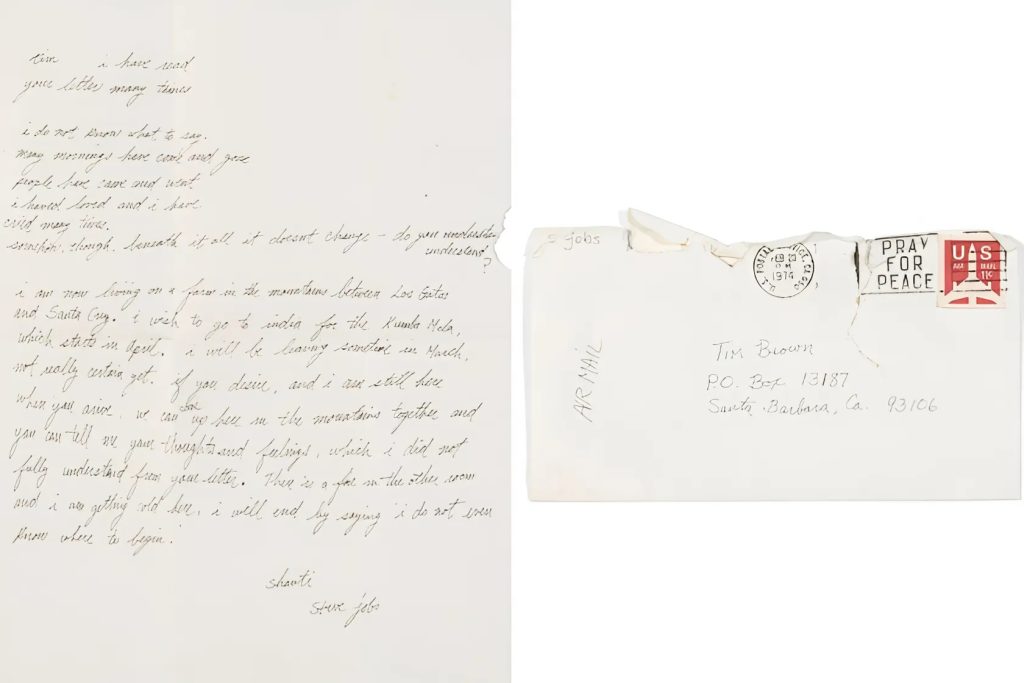
Steve Jobs’ 1974 letter to his friend Tim Brown | Photo Credit : bonhams.com
Seeking meaning through a journey to India
Jobs grew up in the countercultural wave of 1960s California, a landscape dominated by Eastern spirituality, music, and the promise of transcendence. He was deeply inspired by Richard Alpert’s book Be Here Now, a spiritual manifesto by the man who would become known as Ram Dass. Fuelled by these ideals, Jobs and his friend Dan Kottke, a fellow college dropout who would later become Apple’s first employee, embarked on a journey to India in 1974.
Although Jobs missed the Kumbh Mela that year, his travels were transformative. His time in India was marked by both disillusionment and deep realization. In the foothills of the Himalayas, he sought out Neem Karoli Baba, a mystic saint revered by his followers as an incarnation of Lord Hanuman. But when Jobs arrived at the ashram in Kainchi, he learned that the Baba had taken samadhi the previous year.
Steve Jobs and Daniel Kottke were encouraged by locals to continue their journey and visit Haidakhan Babaji. According to Walter Isaacson’s official biography of Jobs, he visited Haidakhan Babaji’s ashram, about 40 kilometres from Haldwani city in the northern India, in search of spiritual enlightenment.

Steve Jobs during his India visit in 1974
Steve Jobs’ journey in India was far from what he had envisioned. As biographer Michael Moritz recounts, Jobs grappled with the stark poverty and heat of India. Yet, beneath the initial disappointment, Jobs discovered a wellspring of insights. “Coming back to America was, for me, much more of a cultural shock than going to India,” he reflected years later.
In the Indian countryside, people don’t use their intellect like we do; they use their intuition instead, and their intuition is far more developed than in the rest of the world.
Steve Jobs
The Kumbh Mela
Though Steve Jobs never fulfilled his wish to attend the Kumbh Mela, its deep spiritual essence echoed the core of his personal journey. 51 years later, this year his wife, Laurene Powell Jobs, who has been given the Hindu name ‘Kamala’ by Swami Kailashanand Giri, has attended the Maha Kumbh Mela in Prayagraj. As a tribute to Jobs’ enduring connection to Indian spirituality, she participated in rituals. Her visit highlights the spiritual thread of India woven into the Jobs family.
The Kumbh Mela is one of the largest spiritual gatherings in the world, bringing together millions of devotees to take a dip in sacred rivers, symbolising purification and renewal. The Kumbh Mela occurs every 12 years. In addition, an Ardh Kumbh Mela, or ‘Half Kumbh,’ is held every six years, and a Maha Kumbh Mela takes place every 144 years in Prayagraj, making it a unique and cyclical spiritual event. 2025 marks the Maha Kumbh Mela, a once-in-a-lifetime spiritual and religious event, that is attracting millions of pilgrims from India and abroad.
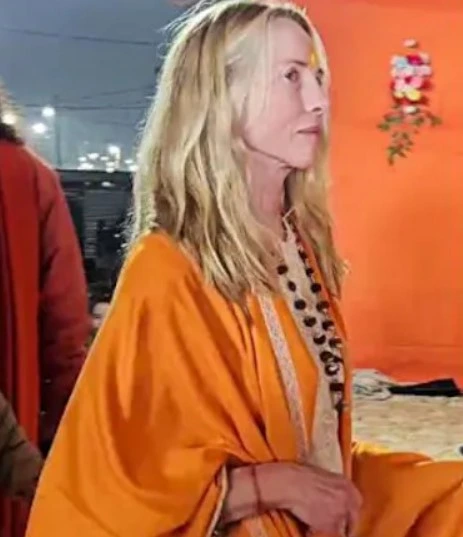
Laurene Powell Jobs at 2025 Maha Kumbh Mela
Discovering a lifelong companion
One of the most enduring influences of Jobs’ time in India was his discovery of Paramahamsa Yogananda’s Autobiography of a Yogi. Encountering the book during his travels, Jobs found it so impactful that it became a lifelong companion. “There was a copy there (Ashram of Neem Karoli Baba) of Autobiography of a Yogi in English that a previous traveller had left, and I read it several times,” he later recalled. This book, which has been a spiritual bestseller since its publication in 1946, shaped Jobs’ philosophy and remained on his iPad until his death in 2011. It was even the sole gift he arranged for attendees at his memorial service.
Steve Jobs knew he was dying and hence he meticulously planned every aspect of his memorial service, which was held at Stanford University in October 2011. Among the thoughtful details, he ensured that each attendee received a brown box as a parting gift. Inside was a copy of Autobiography of a Yogi by Paramahansa Yogananda.
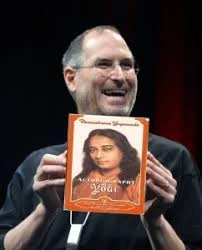
Steve Jobs with the book ‘ Autobiography of a Yogi’
Indian spirituality at the core of Jobs’ work
Autobiography of a Yogi had led Jobs to realize that his intuition was his greatest gift, and that he needed to look at the world from the inside out. Throughout his life, he practiced meditation regularly. It is often said that he believed meditation provided him with inspiration and deep insights, which he credited for shaping innovations that transformed the world.
Intuition is a very powerful thing, more powerful than intellect, in my opinion. That’s had a big impact on my work.
Steve Jobs
This emphasis on intuition can be seen in Apple’s ethos, where products like the iPhone and iPad were designed to feel intuitive to users, requiring little instruction. The minimalist aesthetic, seamless functionality, and focus on user experience owe much to Jobs’ belief in intuitive wisdom, a philosophy rooted in the spiritual teachings he encountered in India.
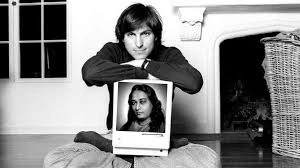
Steve Jobs
A vision rooted in spirituality
Beneath Jobs’ image as a tech visionary was a seeker of truth, grappling with life’s existential questions. As the world reflects on Jobs’ legacy, the spiritual dimension of his life offers invaluable lessons. In an age dominated by intellect and rationality, his belief in intuition as a guiding force challenges us to look inward and trust our deeper instincts.
The recent auction of his 1974 letter, alongside his wife Laurene Powell Jobs’ participation in the Maha Kumbh Mela, highlights the lasting impact of Steve Jobs and his family’s spiritual ties with India.
Read a similar story of, The Maha Kumbh Mela 2025, the world’s largest spiritual gathering.
